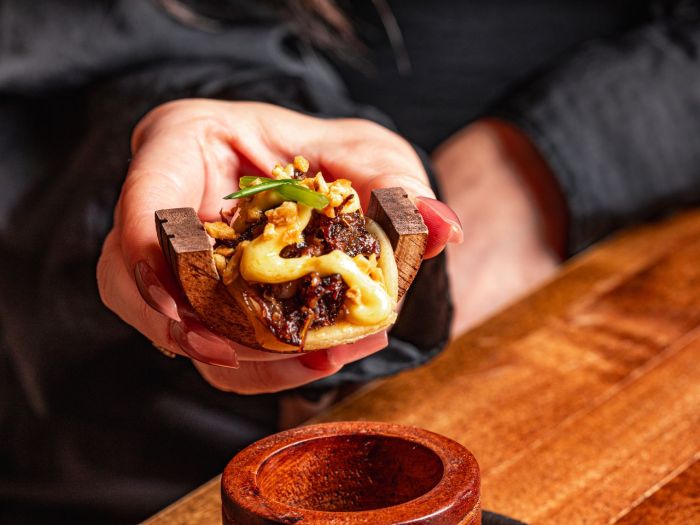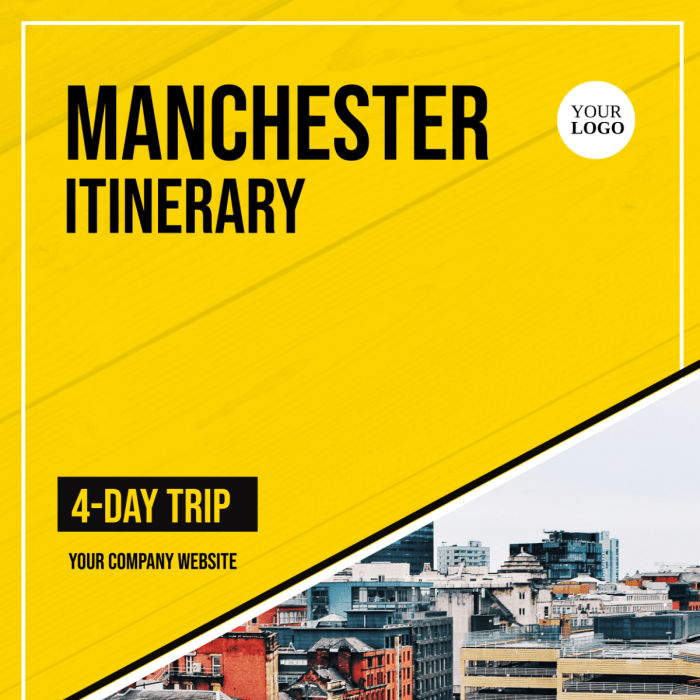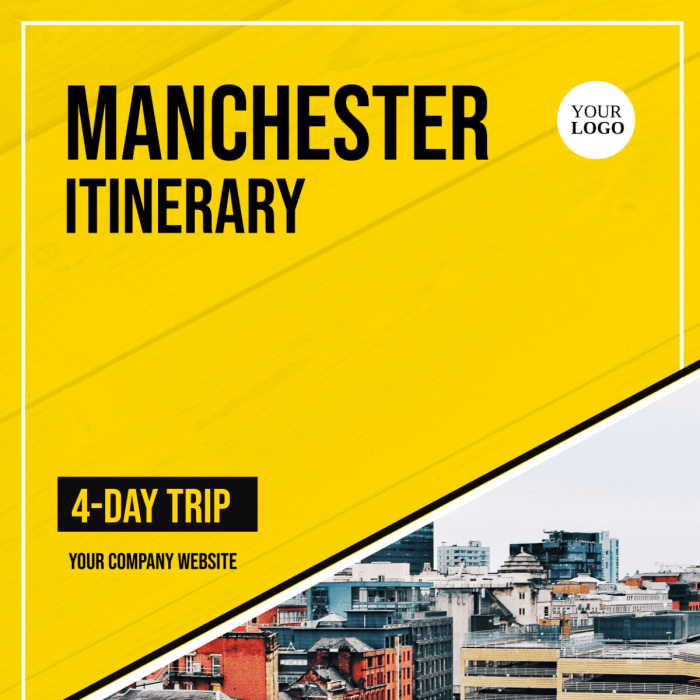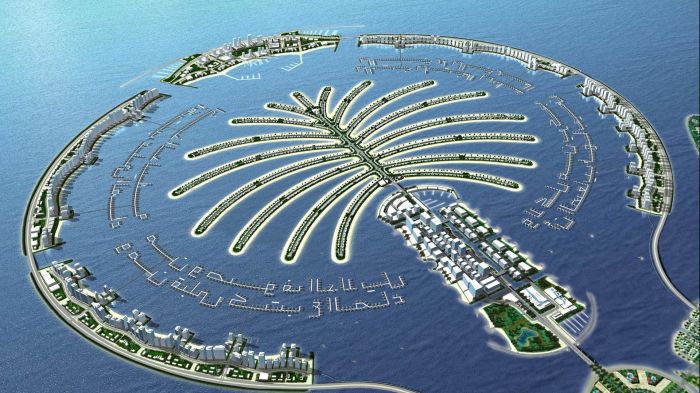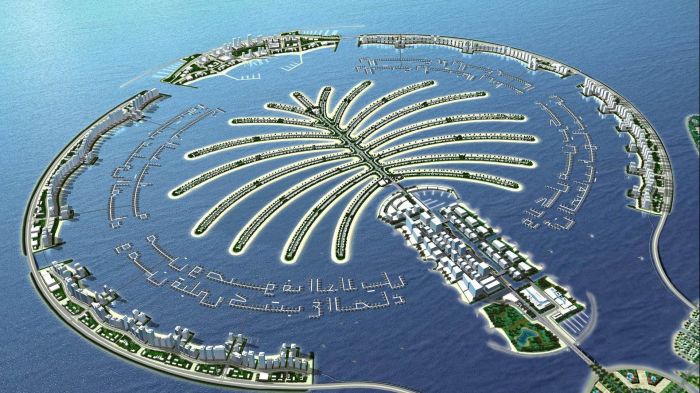Frequently asked questions about Hawaii—this comprehensive guide dives into everything you need to know before planning your Hawaiian adventure. From the breathtaking landscapes and rich culture to practical travel tips and budgeting strategies, we’ve compiled answers to your most pressing queries. Get ready to explore the magic of the islands!
This guide covers everything from essential travel information, including visa requirements and transportation options, to a deep dive into the vibrant Hawaiian culture, delicious cuisine, and stunning accommodation choices. We also provide insights into the islands’ unique climates and the best time to visit. Whether you’re a seasoned traveler or a first-time visitor, this guide will empower you to plan your perfect Hawaiian getaway.
Introduction to Hawaii
Hawaii, a breathtaking archipelago in the central Pacific Ocean, captivates visitors with its unparalleled beauty, vibrant culture, and rich history. From the volcanic peaks of the Big Island to the lush rainforests of Kauai, each island boasts a unique charm. The islands’ diverse landscapes, from dramatic cliffs to pristine beaches, offer a wide array of experiences, catering to every kind of traveler.The islands’ geographic isolation and unique volcanic origins have shaped a distinct culture, deeply rooted in Polynesian traditions.
This cultural heritage, intertwined with American influences, creates a fascinating tapestry that is evident in the local art, music, cuisine, and customs. The historical journey of these islands, from Polynesian settlement to becoming a U.S. state, is a testament to resilience and adaptation. Understanding this context is key to appreciating the rich layers of Hawaiian identity.
Hawaii’s Diverse Geography and Culture
Hawaii’s diverse geography, ranging from snow-capped mountains to coral reefs, has profoundly shaped the culture of the islands. The varied landscapes support a rich array of flora and fauna, including endemic species found nowhere else on Earth. The islands’ isolation fostered unique cultural practices, deeply connected to the land and sea. These traditions are often expressed through music, dance, art, and storytelling.
Historical Context of Hawaii’s Development
Hawaii’s history is a complex narrative spanning centuries. Polynesian voyagers first settled the islands, establishing a unique cultural heritage. Over time, the islands became a center of trade and cultural exchange in the Pacific. European contact, beginning in the 18th century, brought significant changes, including the introduction of new diseases and the imposition of foreign rule. The struggle for independence and the eventual incorporation into the United States shaped the islands’ political and social landscape.
Types of Tourism in Hawaii
Hawaii attracts tourists from around the globe seeking a wide range of experiences. Nature enthusiasts are drawn to hiking, wildlife viewing, and exploring the diverse ecosystems. Beach lovers are enchanted by the white-sand beaches and turquoise waters. Culture vultures are captivated by the Polynesian traditions and vibrant local arts and crafts. Active travelers enjoy watersports, surfing, and other outdoor activities.
Foodies delight in sampling the unique culinary experiences reflecting the island’s rich cultural heritage. The islands offer something for everyone, creating a truly unforgettable experience.
Main Islands and Their Characteristics
| Island | Distinctive Characteristics |
|---|---|
| Oahu | Oahu is the most populous island, home to Honolulu, the state capital. It’s a hub for tourism, offering diverse attractions including Waikiki Beach, Pearl Harbor, and Polynesian cultural experiences. |
| Maui | Maui, known for its stunning natural beauty, features Haleakalā volcano, iconic beaches like Kaanapali, and the Road to Hana, offering breathtaking scenic drives. |
| Kauai | Kauai, the oldest island, is renowned for its lush rainforests, dramatic cliffs, and secluded beaches. Its natural beauty and tranquility make it a popular destination for those seeking a peaceful escape. |
| Big Island (Hawaii) | The Big Island, the largest of the Hawaiian Islands, boasts active volcanoes, diverse landscapes, and unique attractions, including Volcanoes National Park and Kona coffee plantations. |
Essential Travel Information
Planning a trip to Hawaii requires careful consideration of various factors. Understanding travel documents, transportation options, visa requirements, and potential costs is crucial for a smooth and enjoyable experience. This section provides detailed information on these essential aspects.Navigating the Hawaiian archipelago involves choosing the right mode of transport to efficiently traverse between islands and explore each location. Knowing visa requirements and the specific documents needed ensures a hassle-free arrival.
This comprehensive guide helps you prepare for your Hawaiian adventure, covering all the practical details.
Necessary Travel Documents
To enter Hawaii, visitors typically need a valid passport and a return or onward ticket. Specific requirements may vary based on nationality. It’s recommended to consult the official website of the U.S. Department of State for the most up-to-date information on visa and passport requirements for your nationality.
Transportation Options Within the Islands
Hawaii offers various transportation options, each with its own advantages and disadvantages. Flights are the most common way to travel between the major islands, providing speed and convenience. Rental cars allow flexibility for exploring individual islands at your own pace, but parking can be challenging in some areas. Public transportation, including buses and the light rail, is available on Oahu, but may not be sufficient for extensive island exploration.
Consider your itinerary and budget when selecting the best transportation option for your trip.
Visa Requirements and Procedures
Visa requirements depend heavily on your nationality. Citizens of certain countries may be eligible for visa waivers, allowing them to enter Hawaii without a visa for a specific duration. Others might need a B-2 tourist visa, which is granted based on the specific circumstances and duration of stay. Always verify visa requirements for your nationality through official U.S.
government resources. Be sure to apply well in advance to avoid any delays.
Accommodation Types and Price Ranges
| Accommodation Type | Typical Price Range (USD per night) |
|---|---|
| Luxury Resorts | $500 – $1000+ |
| Boutique Hotels | $200 – $500 |
| Vacation Rentals (Houses/Condos) | $150 – $500+ |
| Budget-Friendly Hotels/Hostels | $50 – $200 |
The table above provides a general price range for different accommodation types. Actual costs may vary depending on the specific location, season, and amenities offered. Booking in advance, especially during peak season, is crucial to secure desired accommodation at a favorable price.
Travel Insurance Options and Benefits
Travel insurance is highly recommended for any trip, especially to Hawaii. Comprehensive plans cover medical emergencies, trip cancellations, lost luggage, and other unforeseen circumstances. The cost of medical care in Hawaii can be substantial, and insurance can provide financial protection in case of an emergency. Consider various options from different providers, comparing coverage, premiums, and exclusions to choose the most suitable plan for your needs.
Typical Costs Associated with Visiting Hawaii
The overall cost of visiting Hawaii depends on various factors, including the length of your stay, the type of accommodation, the activities you choose, and your spending habits. A family of four staying for a week in a moderate hotel, including some meals and activities, could easily spend between $3000 and $6000. Budgeting carefully and researching affordable options will help manage expenses effectively.
Flights, accommodation, food, and activities all contribute to the overall cost of a Hawaiian vacation.
Activities and Experiences
Hawaii offers a diverse range of activities to suit every traveler’s interests, from thrilling adventures to relaxing beach days and cultural immersions. Whether you’re seeking adrenaline-pumping experiences or peaceful moments of reflection, Hawaii has something for everyone. The islands’ unique landscapes, rich history, and warm hospitality create an unforgettable vacation experience.The cost of activities and excursions in Hawaii varies significantly depending on the type of experience and the level of luxury desired.
Ever wondered about the best beaches in Hawaii? Or maybe you’re curious about the local cuisine? Those are common questions, and you can find tons of info online. But, if you’re looking for a truly unique experience, consider checking out a trip to a Spanish cave that evokes the feeling of life on Mars. For example, experience life on mars spanish cave offers a fascinating alternative.
Ultimately, while Hawaii offers a plethora of amazing experiences, there’s always more to discover beyond the usual tourist hotspots!
Budgeting appropriately and researching options beforehand is essential to maximize your enjoyment without overspending. Many activities, from snorkeling to hiking, can be enjoyed independently at a lower cost, while guided tours and luxury excursions will naturally command higher prices.
Adventure Activities
Hawaii’s volcanic landscapes and rugged coastlines provide unparalleled opportunities for adventurous activities. Hiking, kayaking, and surfing are popular choices, and the availability of these activities is influenced by the time of year and specific location. For example, certain hiking trails might be closed during periods of heavy rainfall. The cost for these activities ranges from free for exploring beaches to hundreds of dollars for guided multi-day treks.
Relaxation and Beach Experiences
Hawaii’s stunning beaches are a major draw for visitors. The beaches vary considerably in their characteristics, from calm, shallow bays perfect for families to powerful surf breaks ideal for experienced surfers. Waikiki Beach, renowned for its vibrant atmosphere and hotels, contrasts with the secluded beauty of secluded beaches like Hanauma Bay. Prices for beach access are generally low, though some beaches may require parking fees.
The cost of beach-related activities, such as stand-up paddleboarding or boat tours, will vary depending on the specific activity and the vendor.
Cultural Exploration
Immersing yourself in Hawaiian culture is a significant part of experiencing the islands. Luau performances are a popular way to learn about traditional Hawaiian music, dance, and storytelling. Visiting museums and cultural centers provides insight into the islands’ rich history and heritage. The cost of luau experiences can vary widely, from budget-friendly options to high-end, lavish events.
Similarly, the cost of museum entries or cultural center visits varies by location.
Popular Attractions and Historical Sites
Hawaii boasts a collection of notable attractions and historical sites. Pearl Harbor, a significant historical site, offers a powerful look into a pivotal moment in American history. Volcanoes National Park, with its active volcanoes and stunning landscapes, is a must-see for nature enthusiasts. Admission fees apply to most attractions and sites.
Experiencing Hawaiian Culture
Several avenues allow you to experience Hawaiian culture. Attend a traditional Hawaiian music concert, visit a local art gallery, or take a workshop to learn about traditional crafts and art forms. These opportunities offer unique perspectives on Hawaiian traditions and artistry. Costs vary depending on the specific event or activity.
Tours and Excursions
| Tour/Excursion | Duration | Estimated Cost | Highlights |
|---|---|---|---|
| Diamond Head Hike | 2-3 hours | $10-25 (depending on guide) | Panoramic views, moderate hike |
| Snorkeling Tour (Hanauma Bay) | 2-3 hours | $40-80 (depending on boat type) | Explore vibrant coral reefs, diverse marine life |
| Luau (Traditional Hawaiian feast) | 3-4 hours | $75-200+ (depending on the luau) | Cultural performances, traditional food, music |
| Haleakala Sunrise Hike | Full day | $50-150 (depending on the tour) | Witness breathtaking sunrise over the volcano, stunning views |
Note: Prices are estimates and may vary depending on the time of year and specific tour provider.
Food and Cuisine

Hawaii’s culinary scene is a vibrant tapestry woven from the threads of Polynesian, Asian, and American influences. This fusion creates a unique and delicious experience, showcasing the island’s rich history and diverse population. From fresh seafood to exotic fruits, the food in Hawaii offers a taste of the islands’ natural bounty.The flavors of Hawaii are a reflection of its multicultural heritage.
The islands’ Polynesian roots are deeply embedded in the traditional dishes, emphasizing fresh, local ingredients. The arrival of Asian immigrants brought with them diverse culinary traditions, further enriching the local palate. Finally, American influences have introduced more familiar fare, creating a diverse mix that’s both familiar and exciting.
Unique Culinary Scene
Hawaii’s cuisine is characterized by its fresh, locally sourced ingredients. The bounty of the ocean, lush valleys, and volcanic slopes provide a rich array of ingredients. This focus on fresh produce, seafood, and tropical fruits results in dishes that are both flavorful and healthy.
Influences of Polynesian, Asian, and American Cuisines
Polynesian cuisine is the foundation of Hawaiian food, with dishes like kalua pig, poi, and luau feasts showcasing traditional preparation methods and ingredients. Asian influences, particularly from Japan, China, and the Philippines, are evident in the presence of stir-fries, noodles, and various types of dumplings. American influences have added familiar fare like burgers, pizza, and other comfort foods, while also bringing new techniques and ingredients.
Availability of Local and International Restaurants
Hawaii boasts a wide array of restaurants catering to every palate and budget. Local eateries specialize in traditional Hawaiian cuisine, while international restaurants offer a diverse selection of dishes from around the world. From casual cafes to fine dining establishments, the island offers a culinary experience for everyone. This variety allows visitors to sample both authentic Hawaiian dishes and international favorites.
Best Places to Experience Authentic Hawaiian Cuisine
Traditional Hawaiian cuisine is best experienced at luau events, where guests can savor a feast of kalua pig, poi, and other local specialties. Many restaurants throughout the islands, particularly on the Big Island, focus on traditional dishes. A visit to a local farmers market or food truck will provide another taste of authentic Hawaiian fare, and also expose you to the freshest ingredients.
Local Food Traditions and Customs
Sharing food is a significant aspect of Hawaiian culture. Luau feasts are prime examples of communal dining, where people gather to share food, stories, and traditions. The use of fresh, local ingredients is also important, emphasizing respect for the land and its bounty. This practice often extends to the preparation and presentation of the food, reflecting cultural values.
Typical Hawaiian Dishes and Their Origins
| Dish | Description | Origin |
|---|---|---|
| Kalua Pig | Roasted pig, often cooked in an underground oven (imu). | Polynesian |
| Poi | A starchy food made from cooked taro root. | Polynesian |
| Loco Moco | A dish of rice topped with a hamburger patty, gravy, and a fried egg. | American, with possible influences from Japan |
| Poke | A raw fish dish, seasoned and often served with vegetables. | Polynesian |
| Lau Lau | A dish of wrapped meats and vegetables, cooked in a taro leaf. | Polynesian |
Accommodation and Lodging

Finding the perfect place to stay in Hawaii is key to a memorable trip. The islands offer a diverse range of accommodation options, from luxurious resorts to cozy rentals, catering to every budget and preference. Understanding the pros and cons of each type, along with booking strategies, will ensure a smooth and enjoyable stay.Choosing your lodging involves considering factors like location, desired amenities, and your travel style.
Whether you’re seeking a relaxing beachside retreat or an adventurous exploration hub, the right accommodation can significantly enhance your Hawaiian experience.
Different Accommodation Options
Various lodging options exist in Hawaii, each with its unique characteristics. Hotels and resorts provide a structured environment with pre-arranged amenities. Vacation rentals, including condos and houses, offer more flexibility and space, while guesthouses provide a personalized touch. Each option has its own advantages and disadvantages, impacting your overall travel experience.
Pros and Cons of Different Lodging Types, Frequently asked questions about hawaii
- Hotels and Resorts: Hotels and resorts offer a wide range of amenities, including pools, restaurants, and activities. They often have a more structured environment and a greater sense of community. However, they can be more expensive than other options and may lack the privacy of a rental. For example, a family staying at a hotel might enjoy the convenience of on-site dining and activities, while a couple on a romantic getaway might prefer the privacy of a secluded villa.
- Vacation Rentals: Vacation rentals, such as condos or houses, provide more space and privacy than hotels. They often come equipped with kitchens, allowing for greater flexibility in meal preparation. Rentals might also offer a more authentic Hawaiian experience, providing a taste of local life. However, the level of service is typically less comprehensive than at a hotel, and you’ll be responsible for cleaning and maintenance.
- Guesthouses: Guesthouses provide a personalized and intimate experience. They often feature a warm, home-like atmosphere and offer personalized service. Guesthouses may have a smaller scale, which could lead to fewer amenities compared to larger resorts. However, guests can enjoy a more personal touch and a chance to connect with local hosts.
Comparing Hotel Amenities and Pricing
The amenities and pricing of hotels vary significantly across the islands and depend on the star rating and location. The following table provides a comparison of selected hotels on different islands. Note that pricing is an estimate and can fluctuate based on the season and demand.
| Hotel Name | Island | Amenities | Estimated Price (USD per night) |
|---|---|---|---|
| The Grand Hyatt Kauai Resort & Spa | Kauai | Beachfront location, multiple pools, spa, restaurants | $500-$1000+ |
| Hyatt Regency Waikiki Beach | Oahu | Beachfront location, multiple restaurants, pools, spa | $400-$800+ |
| Four Seasons Resort Hualalai | Big Island | Luxury accommodations, private beach access, spa, multiple dining options | $800-$1500+ |
| Sheraton Maui Resort & Spa | Maui | Oceanfront location, pools, restaurants, activities | $350-$700+ |
Booking Process and Procedures
Booking accommodation in advance is highly recommended, especially during peak seasons (summer and holidays). Websites like Expedia, Booking.com, and the hotel’s direct websites are common platforms for booking. It’s important to carefully review the details of your booking, including cancellation policies, payment terms, and the inclusions of the reservation.
Finding Suitable Accommodation
Consider your travel style, budget, and desired amenities when selecting accommodation. For example, families may prioritize larger rooms and amenities like kids’ clubs, while couples may prefer romantic settings and spa services. Reading reviews from other guests can provide valuable insights into the experience at different lodging options. Utilizing online search engines can help you narrow your choices based on specific criteria.
Use filters to refine your search by location, budget, and type of accommodation.
Importance of Booking in Advance
Booking in advance, especially during peak seasons, is crucial to secure your desired accommodations. Hawaii experiences high demand during these periods, and popular hotels often book up quickly. This is especially true for hotels and resorts with specific amenities or desirable locations. For example, booking a beachfront hotel in Waikiki during July would require pre-booking several weeks in advance.
Failing to book ahead could result in limited options and potentially higher prices.
Weather and Climate
Hawaii’s weather is a significant factor influencing travel plans. The islands’ diverse geography and tropical location contribute to a variety of microclimates, making the experience unique on each island. Understanding the typical patterns and seasonal variations is crucial for planning an enjoyable trip.The climate is generally warm and sunny throughout the year, with trade winds moderating temperatures. However, the islands experience distinct weather patterns, especially regarding rainfall and the likelihood of storms.
This makes it important to be prepared for potential variations and choose the best time to visit based on your preferences.
Climate Overview
Hawaii’s climate is generally warm and humid, influenced by the trade winds. These winds, consistently blowing from the northeast, bring moisture and help to moderate temperatures. The islands are also influenced by the surrounding ocean, which further moderates the climate. This characteristic makes it a desirable tropical destination year-round, but certain months might be more appealing depending on your priorities.
Seasonal Variations
Hawaii experiences two main seasons: a wet season and a dry season. The wet season, typically from November to April, is characterized by increased rainfall and a higher chance of showers, especially in the mountainous regions. The dry season, generally from May to October, sees less rain and more sunshine. However, these are just general trends; the exact weather patterns and rainfall amounts vary from island to island and even within specific areas on each island.
Best Time to Visit
The best time to visit depends on your priorities. If you prioritize sunshine and fewer crowds, the dry season (May-October) is often the preferred choice. However, if you’re seeking a more affordable trip and aren’t bothered by potential rain, the wet season (November-April) can offer better deals. Additionally, consider the specific activities you’ll be participating in when making your decision.
Weather-Related Risks and Precautions
While Hawaii’s climate is generally pleasant, there are potential weather-related risks. Hurricanes and tropical storms can occur, particularly during the wet season. It’s important to stay updated on weather forecasts and follow any advisories or warnings issued by local authorities. Being prepared with appropriate clothing, rain gear, and a backup plan in case of unexpected weather events is also crucial.
Average Temperatures and Rainfall
| Month | Average High Temp (°F) | Average Low Temp (°F) | Average Rainfall (inches) |
|---|---|---|---|
| January | 80 | 70 | 10 |
| February | 81 | 71 | 9 |
| March | 82 | 72 | 8 |
| April | 83 | 73 | 7 |
| May | 84 | 74 | 5 |
| June | 85 | 75 | 4 |
| July | 86 | 76 | 3 |
| August | 87 | 77 | 3 |
| September | 87 | 77 | 4 |
| October | 86 | 76 | 5 |
| November | 85 | 75 | 7 |
| December | 84 | 74 | 8 |
Note: These are average figures and actual conditions can vary significantly. Always check current forecasts before your trip.
Ever wondered about the best time to visit Hawaii? Or maybe you’re curious about the local cuisine? Frequently asked questions about Hawaii often revolve around planning a trip, and one fantastic option for an unforgettable getaway is checking out Smith Fork Ranch Colorado all inclusive. Smith Fork Ranch Colorado all inclusive offers a unique experience, perfect for those seeking a different kind of vacation.
But ultimately, the frequently asked questions about Hawaii always come back to the incredible beauty and diverse experiences this island paradise has to offer.
Island-Specific Climate
The climate varies slightly from island to island due to differing elevations and geography. For example, the mountainous regions of Oahu and Maui can experience cooler temperatures and more frequent rain than the coastal areas. This means that while the general trends described above apply, local conditions should be considered when planning specific activities or outings.
So, you’re planning a trip to Hawaii? Naturally, there are tons of frequently asked questions buzzing around. One frequently asked question often revolves around logistics, and a surprisingly valuable service for smoother travel is having an airport greeter. Hiring one for your trip can save you significant stress and time, especially if you’re unfamiliar with the island or have luggage issues.
Consider this a key piece of the puzzle when you’re sorting through all the frequently asked questions about Hawaii and ensuring a seamless arrival. Check out this article to learn more about why an airport greeter is worth the price and how they can be a real game-changer for your Hawaiian adventure.
Local Culture and Customs: Frequently Asked Questions About Hawaii
Hawaii’s rich tapestry of culture is woven from indigenous traditions, Polynesian heritage, and influences from other cultures. Understanding the nuances of local customs and etiquette is key to a respectful and enriching travel experience. Respect for elders, family, and the natural environment is paramount in Hawaiian society.The significance of Hawaiian traditions extends far beyond mere customs; it’s deeply ingrained in the identity of the islands and its people.
These traditions reflect a profound connection to the land, the sea, and the ancestors. Respecting these traditions is not just a matter of politeness; it’s a way to connect with the soul of Hawaii.
Cultural Norms and Etiquette
Hawaiian culture emphasizes aloha, a concept encompassing love, compassion, and respect. This philosophy translates into warm hospitality and a genuine desire to connect with visitors. Politeness and consideration are highly valued. Addressing elders with titles like “Auntie” or “Uncle” demonstrates respect. Maintaining eye contact and offering a warm smile are common courtesies.
Significance of Hawaiian Traditions and Customs
Hawaiian traditions are deeply rooted in oral history, passed down through generations. Stories, songs, and dances recount the history of the islands, the gods, and the ancestors. These traditions are not merely historical artifacts; they are living expressions of the Hawaiian identity. The hula, a traditional dance form, tells stories, expresses emotions, and connects with the spirit of the land.
The intricate weaving of tapa cloth reflects the artistry and respect for nature.
Respecting Local Beliefs and Practices
Respecting local beliefs and practices is crucial for a positive interaction. Avoid touching someone’s head, as it’s considered disrespectful in many cultures, including some Hawaiian traditions. Be mindful of sacred sites and historical locations. Dress modestly when visiting temples or other religious sites. Engage with local communities with genuine curiosity and respect.
Cultural Sensitivities and Appropriate Behavior
Hawaii’s cultural sensitivities are deeply connected to its history and natural environment. Avoid loud or boisterous behavior, especially in public spaces. Maintain a respectful distance when interacting with people. Show deference to elders and those in positions of authority. Refrain from taking photos of individuals without their permission.
Learning Basic Hawaiian Phrases
Learning a few basic Hawaiian phrases is a thoughtful gesture that demonstrates your respect for the local culture. It shows your desire to connect with the people and their language. These phrases can open doors to deeper conversations and interactions.
Essential Hawaiian Phrases
| Phrase | Meaning |
|---|---|
| Aloha | Hello, goodbye, love |
| Mahalo | Thank you |
| E komo mai | Come in |
| ʻŌlelo Hawaiʻi | Hawaiian language |
| A hui hou | See you later |
| Pono | Right, good, proper |
“Aloha” is not just a greeting; it’s a way of life.
Tips for Planning a Trip
Planning a trip to the Hawaiian Islands is an exciting endeavor, but careful preparation ensures a smooth and unforgettable experience. From choosing the right time of year to navigating the islands, understanding your budget and safety precautions, meticulous planning is key to maximizing your enjoyment. This section provides essential tips to help you plan your Hawaiian adventure.
Packing Appropriately
Hawaii’s weather varies by island and season, but generally, it’s warm and sunny. Packing light is always recommended, but it’s crucial to consider the potential for rain, especially during the off-season. Lightweight, quick-drying clothing, swimwear, and comfortable walking shoes are essential. Don’t forget sunscreen, a hat, sunglasses, and insect repellent. For hiking or exploring the more rugged terrain, sturdy hiking boots or shoes are a must.
Remember to pack layers, as evenings can be cool, even on sunny days.
Navigating the Islands
Hawaii’s islands are interconnected, but each has its own unique character and attractions. Renting a car is a popular option, allowing you to explore at your own pace. However, consider the cost of gas and parking, especially on the more popular islands. Public transportation options, such as buses, are available but might be less convenient for longer distances.
Alternatively, consider utilizing ride-sharing services or taxis. Knowing the most efficient transportation options for your itinerary is crucial for saving time and money. Utilizing the island’s public transportation system and ride-sharing services can be more economical, especially for shorter distances.
Budgeting and Managing Finances
Hawaii can be an expensive destination, so meticulous budgeting is essential. Create a detailed budget that includes accommodation, flights, food, activities, and transportation costs. Consider purchasing a prepaid travel card for easy access to funds. Research deals and discounts for activities and attractions. Utilizing online resources for deals and discounts on flights, accommodation, and activities is highly recommended to help save money.
Using credit cards with rewards programs can also be beneficial for maximizing your travel spending.
Staying Safe and Healthy
Hawaii is generally a safe destination, but taking precautions is always advisable. Stay aware of your surroundings, especially in crowded areas. It’s important to familiarize yourself with local laws and customs. If you’re taking any medications, pack enough for the duration of your trip. Also, be mindful of the potential for altitude sickness if you’re visiting higher elevations.
Consider purchasing travel insurance to cover any unforeseen circumstances. Staying hydrated and eating healthy foods will contribute to maintaining good health throughout your trip. Be sure to check the latest travel advisories and recommendations before your trip.
Essential Packing Items
| Category | Items |
|---|---|
| Clothing | Light, quick-drying clothing; swimwear; comfortable walking shoes; layers; hat; sunglasses; light jacket or sweater; casual dresses; comfortable walking shoes; hiking boots/shoes (if hiking); |
| Toiletries | Sunscreen; insect repellent; toiletries; first-aid kit; medications (if needed); |
| Electronics | Phone charger; camera; portable charger; |
| Documents | Passport; visa (if required); travel insurance information; hotel confirmations; flight details; |
| Other | Reusable water bottle; comfortable walking shoes; backpack; first-aid kit; a small, lightweight backpack; |
Hawaii offers a diverse range of experiences, from stunning beaches to lush rainforests and active volcanoes. Thorough preparation and consideration of these essential tips will undoubtedly contribute to a memorable and enjoyable trip.
Budgeting and Finances
Planning a trip to Hawaii requires careful budgeting. Understanding the potential costs associated with various activities and experiences is crucial for creating a realistic budget and ensuring a memorable trip without financial stress. This section provides strategies for creating a budget, outlining potential expenses, and offering tips for saving money while maximizing your Hawaiian adventure.Hawaii’s beauty comes at a price, but careful planning can make your dream vacation a reality.
By anticipating costs and implementing cost-saving strategies, you can enjoy the islands without breaking the bank.
Creating a Budget
Creating a detailed budget is essential for a successful trip. Start by estimating the total amount you’re willing to spend and then break down the costs into categories. Consider flights, accommodation, activities, food, transportation, and souvenirs. Factor in potential unexpected expenses like medical costs or emergencies. Use a spreadsheet or budgeting app to track your progress and adjust your plan as needed.
Remember to factor in potential fluctuations in currency exchange rates if traveling from outside the US.
Activity and Experience Costs
Activities and experiences in Hawaii vary greatly in price. A guided snorkeling tour can cost anywhere from $50 to $200 per person, while a helicopter tour can easily reach several hundred dollars. Consider the value you place on certain activities and experiences to allocate your budget accordingly. For example, while a luau might be an expensive experience, a sunset hike on a local trail could be a cost-effective alternative with incredible views.
Saving Money
Several strategies can help save money while in Hawaii. Consider staying in budget-friendly accommodations, such as hostels or vacation rentals. Pack your own snacks and drinks to avoid high prices at tourist areas. Take advantage of free activities, such as hiking, exploring beaches, or visiting parks. Look for discounts or deals on tours and attractions, and consider travel during the off-season for potential price reductions.
Managing Finances in Hawaii
Managing your finances while in Hawaii is important for a smooth trip. Consider using a credit card with no foreign transaction fees or a travel-specific debit card. Set aside cash for smaller purchases and emergencies. Be aware of local payment methods and exchange rates. Exchange currency in advance to avoid potential higher fees at the airport.
Affordable Accommodations and Activities
Numerous options exist for affordable accommodations in Hawaii. Hostels, vacation rentals, and budget-friendly hotels often offer great value. Look for deals on online travel agencies or explore local listings. For activities, consider exploring local parks and beaches, taking advantage of free events, or opting for free walking tours. Many local communities offer free or low-cost events and activities.
Potential Expenses
| Category | Estimated Cost (USD) |
|---|---|
| Flights | $500 – $1500 (round trip) |
| Accommodation (7 nights) | $500 – $2000 (depending on type) |
| Activities (4) | $200 – $800 (depending on choices) |
| Food and Drinks | $500 – $1500 (depending on dining choices) |
| Transportation | $100 – $500 (depending on method) |
| Souvenirs | $100 – $500 (depending on purchases) |
| Miscellaneous | $100 – $300 (for unexpected expenses) |
| Total Estimated Budget | $2000 – $6500 |
Remember that these are estimated costs. Actual expenses will vary based on your choices and preferences.
Closure
In conclusion, planning a trip to Hawaii can be exciting and rewarding. By understanding the frequently asked questions, you can make informed decisions, ensuring a seamless and unforgettable experience. From navigating the islands to savoring the local culture, this guide provides a solid foundation for your Hawaiian journey. Now get ready to pack your bags and embark on your island adventure!








